 This picture is similar to the one I posted yesterday. A human being is once again the door into the picture world, or focal point. Strong diagonals - the stair railing, wall along the steps and the boy's own knees - lead the viewer's eye directly to the boy's face.
This picture is similar to the one I posted yesterday. A human being is once again the door into the picture world, or focal point. Strong diagonals - the stair railing, wall along the steps and the boy's own knees - lead the viewer's eye directly to the boy's face. The off center positioning contributes to the picture's feeling of being slightly out of kilter, or moody, or melancholy - all emotions a viewer might project onto the picture, based on the look on the boy's face and his body language.
The window in the top left corner represents a potential design problem. Placing a significant object at the edge or top of a composition runs the risk of leading a viewer's eye right out of the picture world. In this composition the saving factor is the diagonal crosshatching of the window pane. The diagonal lines lead the eye back to the interior of the picture world, and encourage us to study the boy one more time.
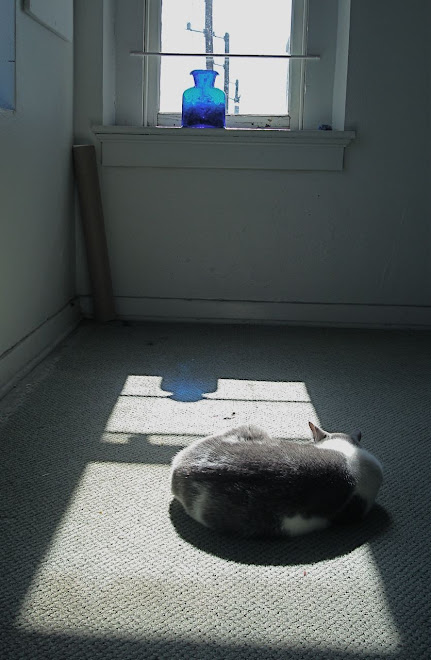
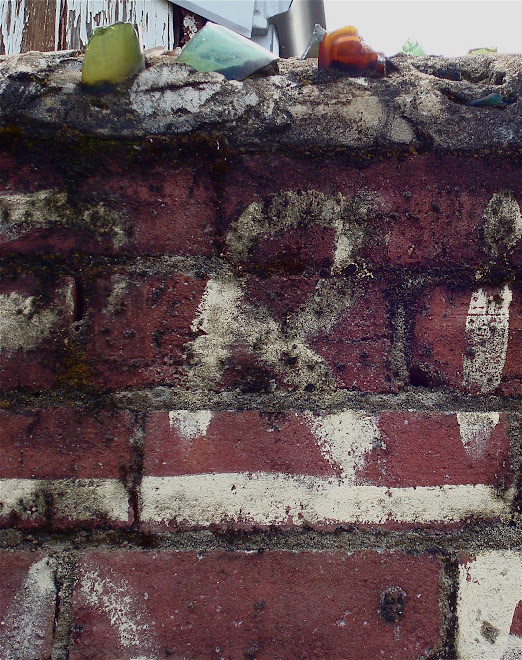

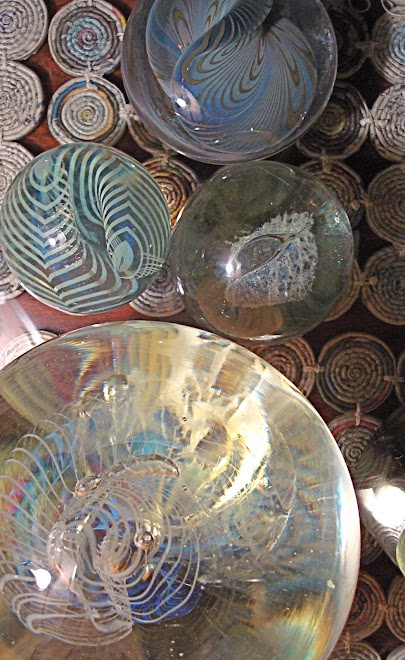








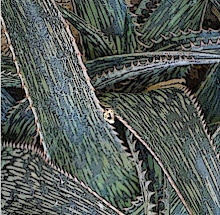


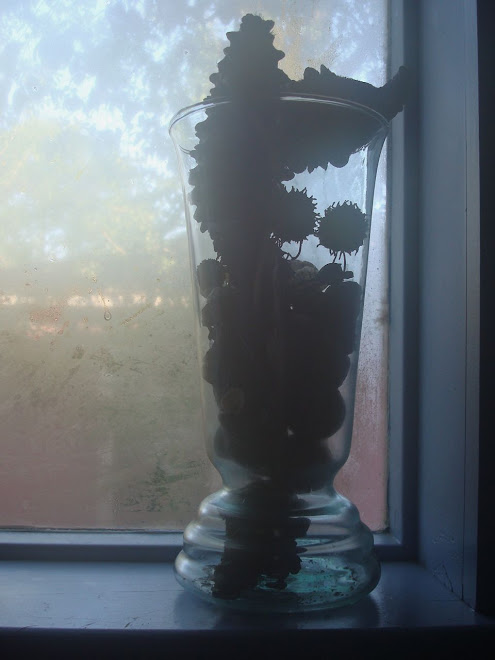

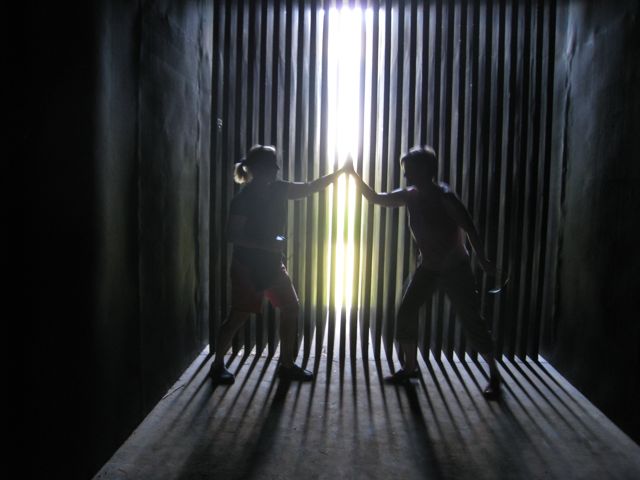
4 comments:
Hi Jane,
I have just started reading this new blog of yours, and as one who always carries my camera with me, my question to you is, what initially led you to take this photograph? Did you intuitively 'see' the lines and the boy then became your focus, or vice versa?
Thank you for writing this blog and offering it to the masses! I hope I can digest and learn from this gift of yours.
Judy
Hi Jane
As a newbie to Art Quilts, I am keen to learn as much as possible from everyone else around me. So I have one really simple question - sorry if it sounds stupid but "How do you interpret all of this in the photo?" or "How do you choose what to photograph?"
Thanks
Leigh
Thank you for taking time to ask your questions, Leigh and Judy.
I fell into this blog rather than planning it. My daughter gave me a camera for Mother's Day a year ago and I loved the ease of use and also the clarity of the images. Combine that with having a new Mac computer and the Iphoto program, and it was enough to get me started.
Now I take pictures whenever I can, and I try to carry the camera with me. In the instance of this image, the young boy just happened to be sitting on the steps of a museum while other children played around in the courtyard. I was able to catch him in this mood and get the picture, but I have found with people it's hard to do. If you ask them, they become self-conscious. If you don't ask them, you run the risk of offending them. So catching them unaware has been the best strategy so far, although I've missed some great moments because there wasn't any way to get a picture surreptitiously.
In the case of this image, I cropped it to create the picture you see. It would not have been as effective if I hadn't changed it, but that's part of the point of the "practice". If I study design principles then I know how to alter an image to make it stronger. So I experimented with the cropping feature on the Iphoto program until I came up with this configuration.
And, as there are no stupid questions, Leigh, I appreciate your simple one. Many artists intuitively begin a piece, with some idea of where they are headed, but not a clear idea. As the work progresses the idea comes into focus! That's how I work with the photographs. I take pictures I think will be interesting and then when I download them into the computer, I check what I've got. A lot of the time the pictures aren't all that great. But if I continue to take loads of them, then I get some good ones. When I study the good ones I can apply the design principles to make the image stronger - to "support" and build relationship within the composition.
As with all art capable of standing the test of time, I work with good basic visual information, and then I apply design principles I've learned and mastered, in order to create the best visual product possible.
I hope this helps you to understand my process.
This is a wonderful photo, and your answers to the questions combined with your comments makes for great lessons. Thank you.
Post a Comment